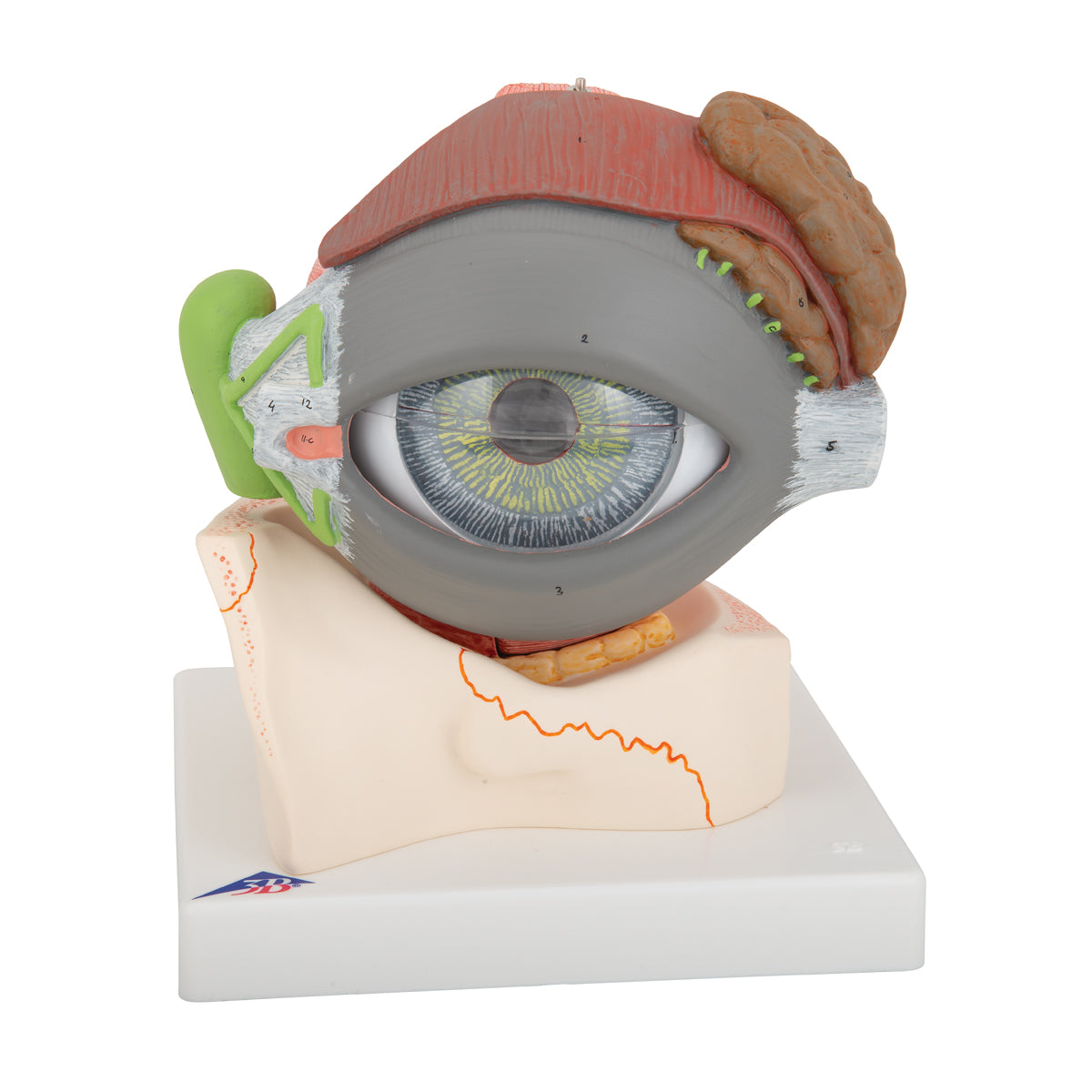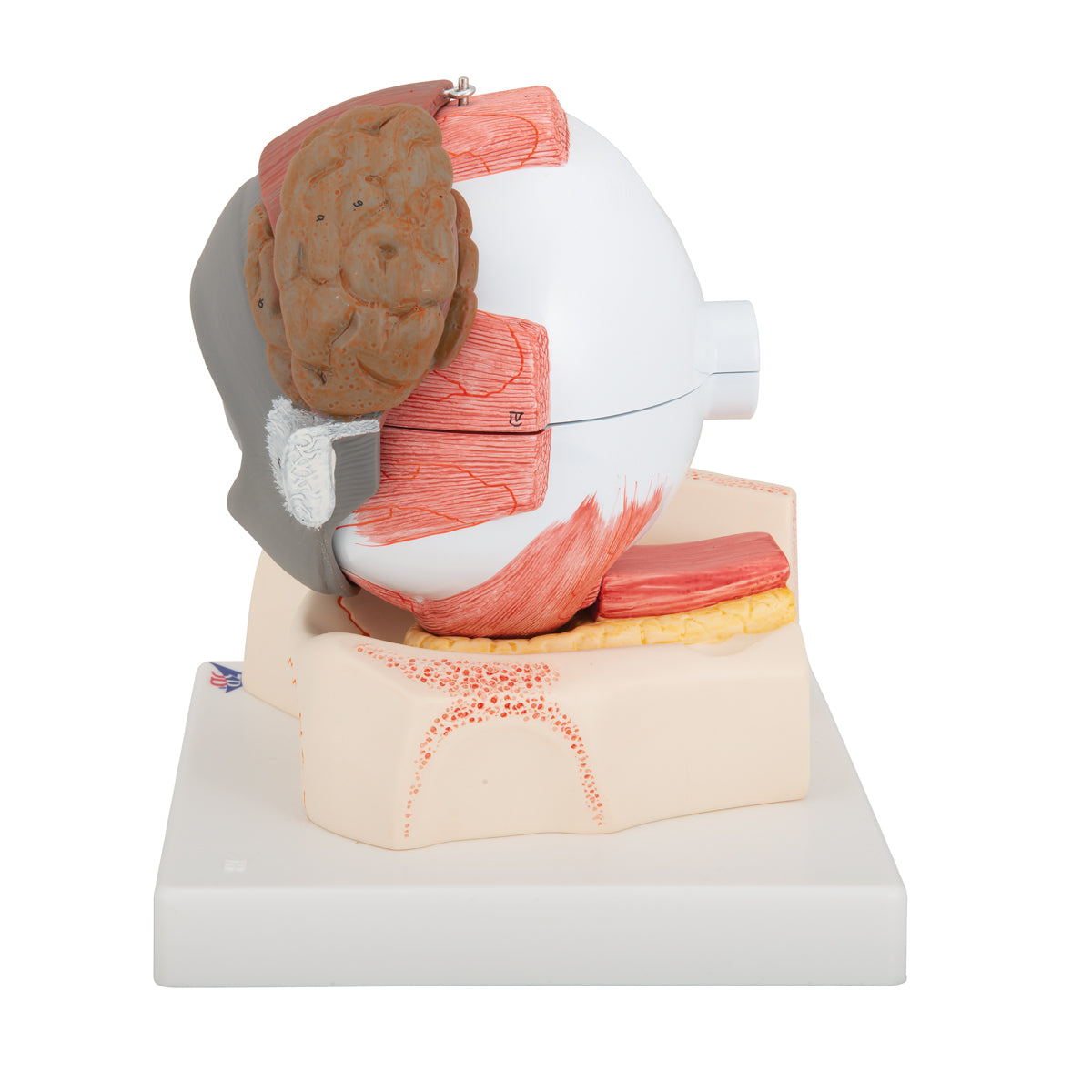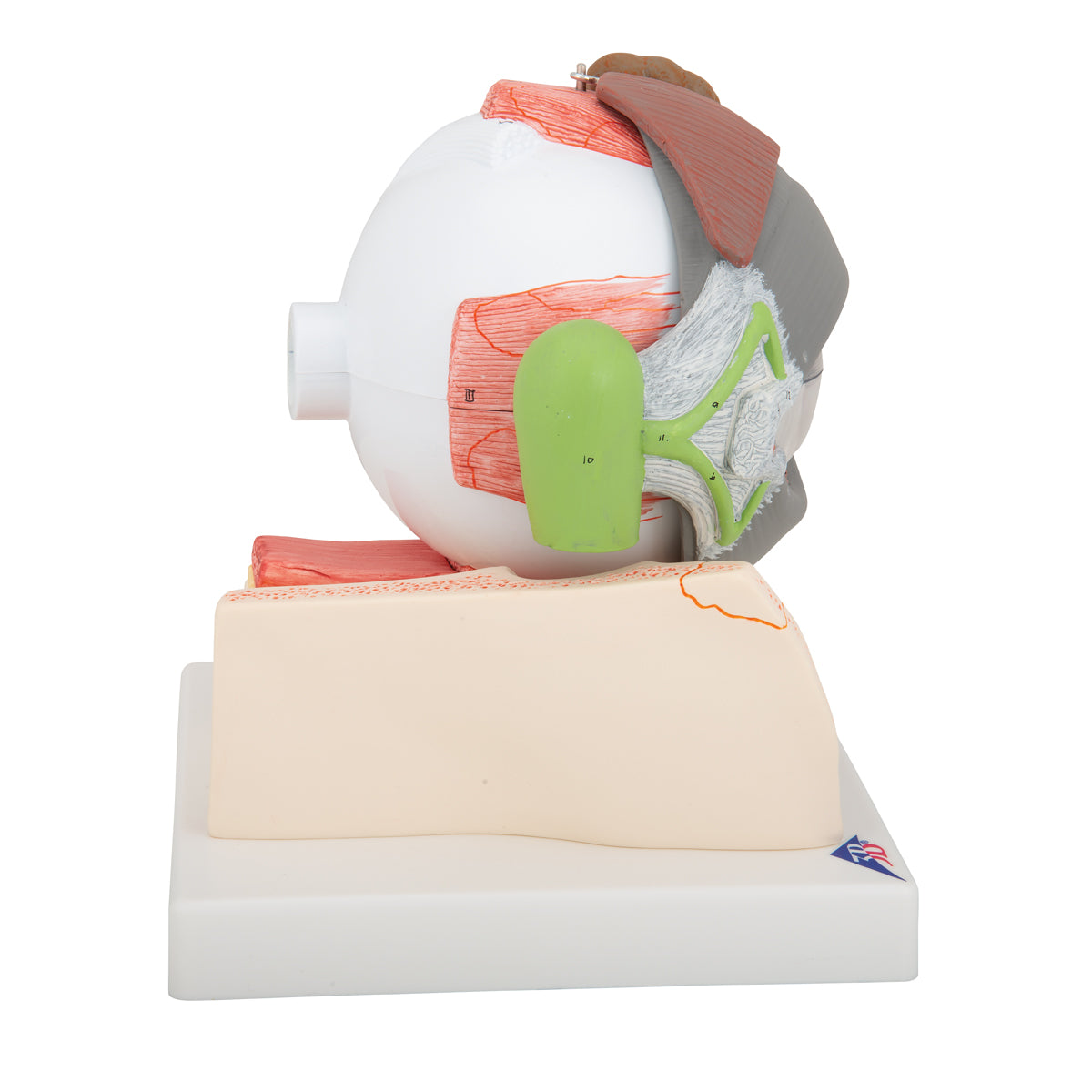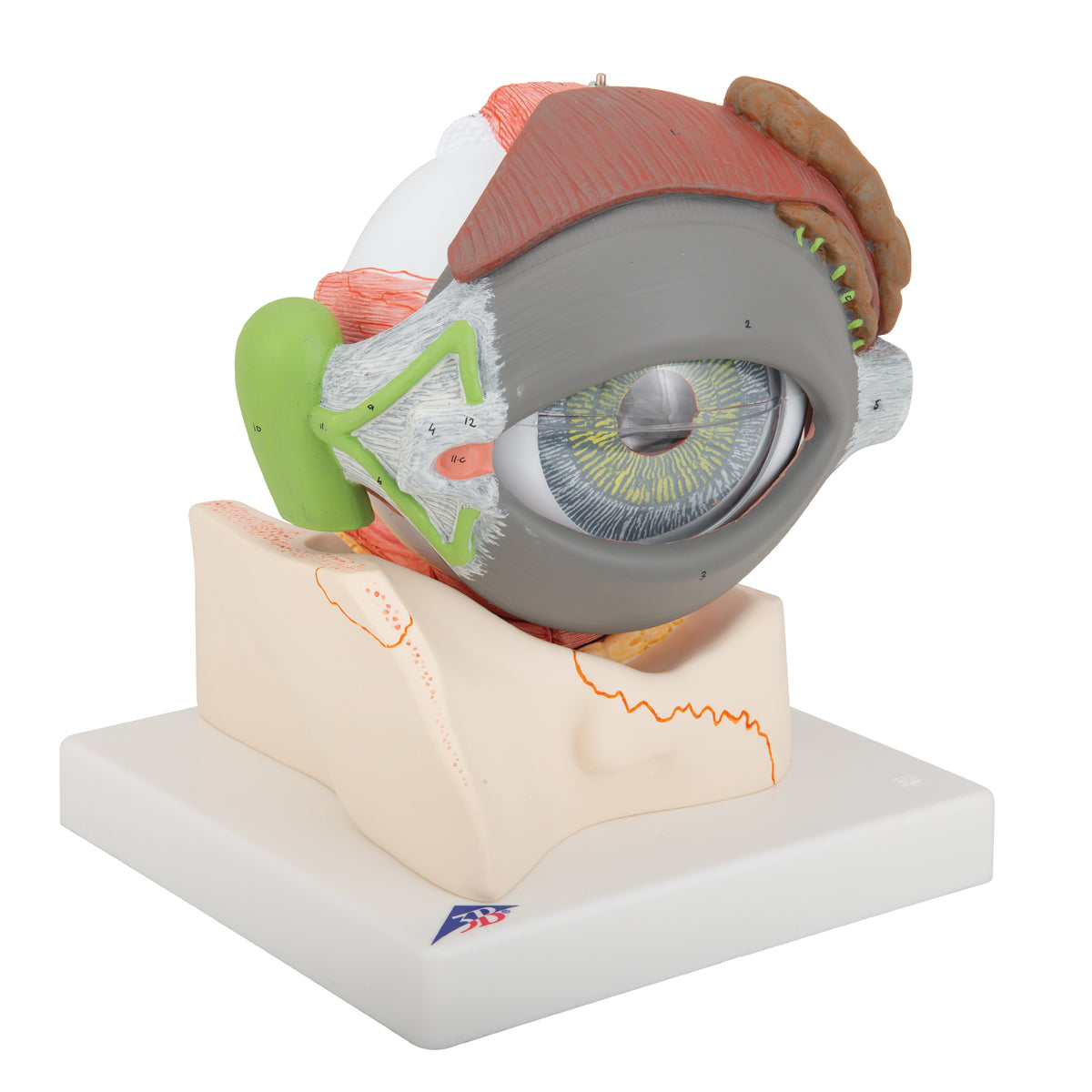SKU:EA1-1000257
Complete eye model which is enlarged and can be separated into 8 parts
Complete eye model which is enlarged and can be separated into 8 parts
ATTENTION! This item ships separately. The delivery time may vary.
Couldn't load pickup availability
This complete, educational and enlarged model shows the most important anatomical structures both outside and inside the eye.
The eye model weighs approximately 1.2 kg and the dimensions are 20 x 18 x 21 cm. It shows the eye in 5 times normal size and can be separated into 8 parts. It is delivered on a stand (white plastic sheet).
Anatomically speaking
Anatomically speaking
Anatomically, the model shows the layers of the eye, which consist of the following:
The outermost layer, made up of the transparent cornea, which at the limbus is connected to the sclera (the white tendon that makes up the back 5/6)
The middle layer (called the uvea) which consists of the iris (rainbow) incl. the pupil, the corpus ciliare (the ciliary body) which can only be seen on the model and the choroid (choroid)
The inner layer called the retina
Inside the eye model is the vitreous body (corpus vitreum), and at the back is the optic nerve (nervus opticus) in relation to blood vessels.
The eye model can be split so that the layers can be studied (see images to the left). Furthermore, the lens and the entire vitreous body can be removed.
Outside the white tendon, the eye's movement apparatus is seen, which consists of 6 striated muscles - the 4 straight muscles called musculi recti and the 2 oblique muscles called musculi obliqui.
In addition, a bit of bone tissue, other soft tissues such as ligaments and fatty tissue and the lacrimal apparatus, which consists of the lacrimal gland and lacrimal ducts (the lacrimal canals, the lacrimal sac and the lacrimal duct, of which only the latter is not visible), are seen.
Flexibility
Flexibility
Clinically speaking
Clinically speaking
Clinically, the model can be used to understand diseases of the eye. It can be, for example, "red eye", retinal detachment, vitreous collapse, diabetic eye disease, uveitis, scleritis as well as metastases and primary tumors such as malignant melanomas (birthmark cancer) in the uvea.
Furthermore, the model can be used to understand diseases of the lacrimal gland and tear ducts, such as lacrimal duct stenosis.
Share a link to this product

A safe transaction
For 19 years I have been managing eAnatomi and sold anatomical models and posters to 'almost everyone' who has anything to do with anatomi in Scandinavia and abroad. When you place your order with eAnatomi, you place your order with me and I personally guarantee a safe transaction.
Christian Birksø
Owner and founder of eAnatomi and Anatomic Aesthetics














